by Curlan Campbell
Is the portrayal of the Jab Jab really about celebrating our freedom from chattel slavery, or is there a far more ancient significance to this portrayal?
My research has shown me a different perspective on what the Jab Jab can represent. The cancellation of Carnival 2020 due to the coronavirus Covid-19, has created a wonderful and unique opportunity to examine ourselves, our culture and our history to ensure that we tell our story from our perspectives.
We have been telling the same story about the origins of our culture from a limited point of view that fails to speak to the entire truth about our rich history and legacy before, during and post-slavery. Furthermore, Grenadian scholars and historians seem to be a bit shallow in their attempts to explore our great history since they too are viewing their African roots through the European lens.
Traditional mas’ J’ouvert, particularly the “Jab Jab” — or “Diab Diab” which is the original name — has lost its significance over the years to the point where it has been reduced to a mere holiday to frolic and indulge in excessive drinking and vulgar activities without any respect for this ancient spiritual practice of our African ancestors. The history of what is stated to be the Grenadian origins of the “Jab Jab” although it is accurate in some respect, the information still lacks historical context and a piece of valuable information seems to have been lost in translation.
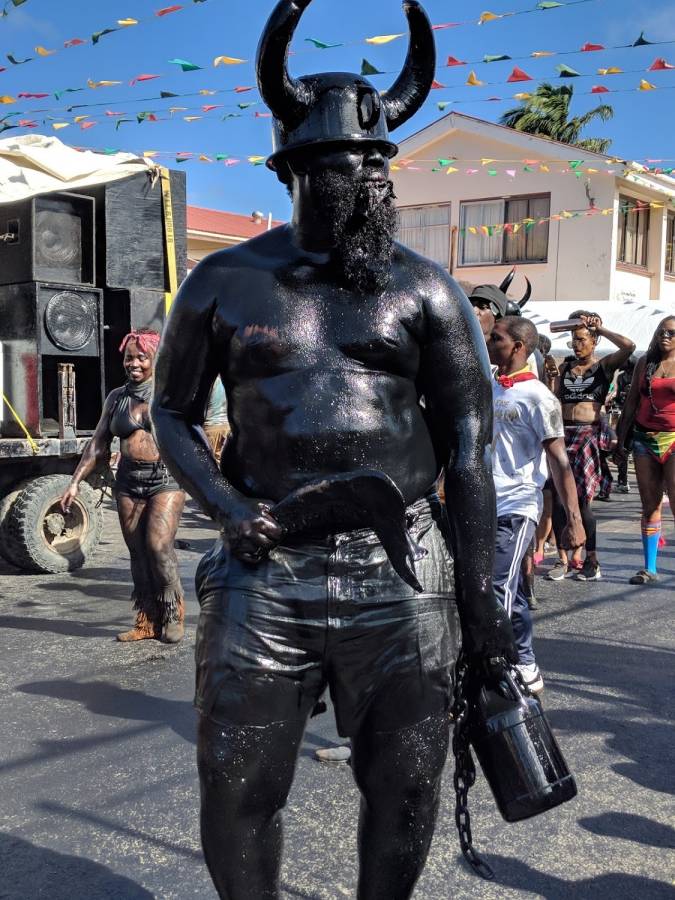
The concept of the existence of the devil as recognised in Christianity is a concept that doesn’t exist in any ancient African spiritual traditions or African spirituality including the ancient Kemetic (Egyptian) spiritual system, Dogon spiritual system of Mali and Ifa spiritual system of the Yoruba people of Nigeria. Therefore, saying that our ancient practice is synonymous with devil worship or evil is a direct slap in the face of our ancestors. For those who have studied ancient African traditions and cultures, we can make the argument that the concept of what is today called the Devil, originated from Hapi “Nile Valley” Culture of the ancient Kemetic Legacy (Ancient Egypt) where African (Black) people ruled for 4 Golden ages or from 3200 BCE until 322 BCE before being conquered by the Greeks. (Black Man of the Nile and His Family by Dr Yosef Ben-Jochannan, 1989). It is also important to note that the word “Kemet” (Egypt) translates into “Land of the Blacks”.
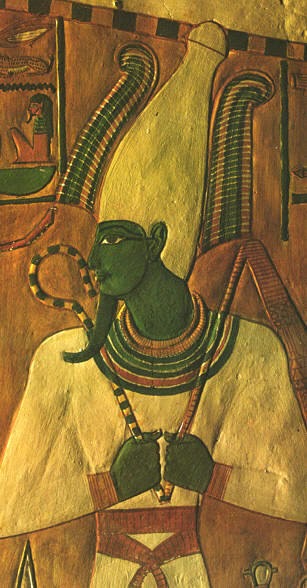
From their cosmology, Europeans developed the concept of the Devil which is derived from the study of the Neteru (Deity) Set, the god of chaos, deceit, destruction and war, who is in constant battle with Heru (Horus). It will be incorrect to associate Set with evil because based on research done by African-American scholars who translated the Mdu Ntchr (hieroglyphics), the battle signifies the coming forth of Day and then Night with Heru, the son of Aset, symbolic of Day (Sun) and Set symbolic of the night (Moon). In addition, Set is also considered a protector and is sometimes linked with the protection given by our immune system that is constantly fighting off infections. (Spiritual Warriors are Healers by Mfundishi Jhutyms Hassan Kamau Salim, 2003).
So, what does Kemetic history has to do with the cultural expression we today call Jab Jab in Grenada? A possible connection exists between the cultural customs of the descendants of enslaved Africans and our ancient ancestors from the continent of Africa.
Africans who reside anywhere in the diaspora are still practising the same culture of their ancient ancestors whether they are aware of it or not. Take for instance the African concept of pouring libations (alcohol) on the ground in recognition of the ancestors or to pay respect to a deceased relative or friend. For most African-American rappers who were unaware of this practice, they innately copied that tradition during the early years of Hip Hop in the 80s and 90s. Most of our ancient traditions practiced before slavery was either fused with cultures adopted from interactions with our former enslavers or we have completely forgotten the origins of some of these practices altogether.
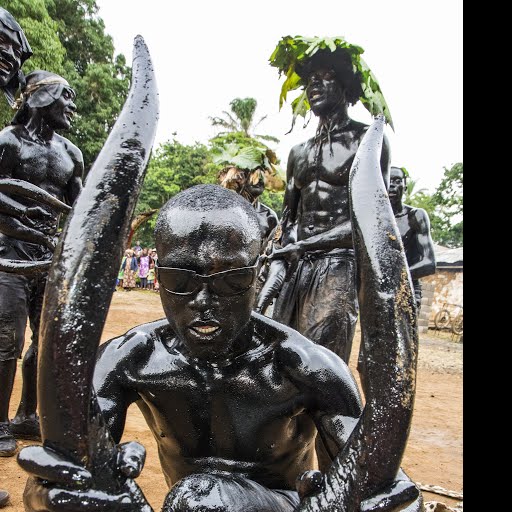
Attempting to explain the origins of some of the artistic expression displayed during J’ouvert “Jab Jab” including the significance of the colour Black as mimicked through old oil, or most recently grease mixed with charcoal to resemble molasses, we must not think for a second that this tradition is unique to Grenada. In fact, there are similar traditions of the Jab found in places like Haiti with the L’anse Kod, the Neg Gwo Siwo displayed during Martinique’s Carnival and the ‘Nyang Nyang’ festival of the fussep people (Bafoussam people) of Cameroon.
In Grenada, these traditions are said to have emerged after emancipation, re-enacting the brutal nature of slavery and also as an expression of emancipation from the physical shackles of slavery. Still, I challenge our historians to look much deeper, and they will see that there are Africans on the continent whose traditions mirror that of what is portrayed in Grenada and the Caribbean.
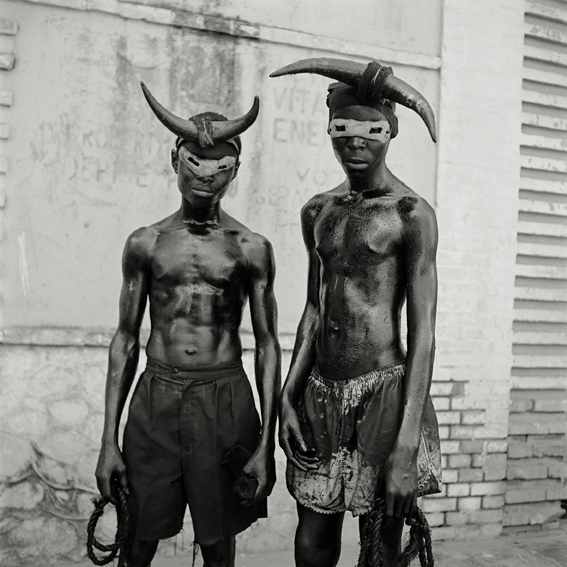
Let’s return to our ancestors who ruled what today is referred to as Egypt; now occupied by Arabs who conquered the area around 640 AD according to some scholars. Based on research and study of the Kemetic Legacy, I have made a strong connection to where the spiritual practice of the Jab may have originated. During ancient Kemet, our ancestors fostered a love for nature to the point where they created an entire cosmology around the Divine principles and laws of nature expressed through the creation of animal-like creatures with human bodies which they referred to as the Neteru “NTR”. Sticking to the subject, I will refer only to 4 Neteru that applies to the article since the Kemetic spiritual systems can become overwhelming and hard to understand.
These Neteru are Ausar or (Osiris), Hethert (Het Heru), Min the Fertility Neteru and Yinepu or Anpu (Anubis). According to African American scholars, Ausar was depicted as a man either with Green or Black skin adorned in all white, wearing a white crown and holding a Heka (Crook) and Nekhakha (Flail). Ausar is referred to as the Great Black and his depiction signifies a merciful judge of the dead in the afterlife but is also associated with being the lord who yielded vegetation and the fertilising of the land through the floods of the Hapi (Nile) River which was deemed essential for the irrigation of crops.
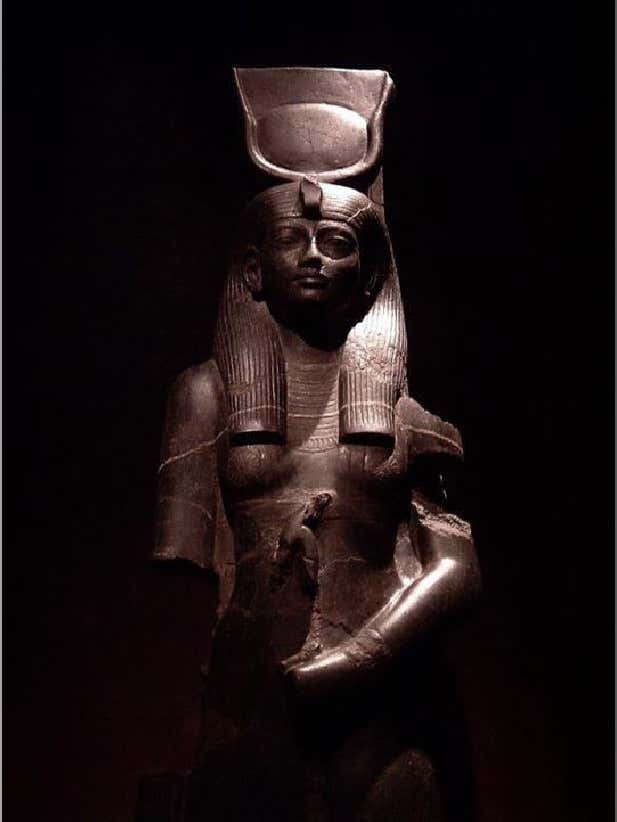
Photo credit: The Museo Egizio archaeological museum in Turin, Piedmont, Italy
Hethert (Hert Heru) is a female Neteru whose zoomorphic nature resembles that of a cow. In her human form, she is also depicted with locks or braided hair, cow horns on her head with the Sun disc in the centre and is said to represent the sacred mother and fertility. Anpu (Anubis) is another Neteru who carries great significance as he is responsible for preparing the body of the dead through a process called Sahu or the mummification process, to be brought before Ausar to be judged. In his zoomorphic form, Anpu is represented as either a full jackal or as a jackal-headed man with Black skin.
The significance of these Neteru can be linked to the tradition we today call Jab Jab, now we understand that the colour Black represents fertility in ancient customs. After each harvest, the Kemetic people who originated from the interior of Africa including Ethiopia, Sudan and later the land we today call Egypt, are known to conduct a ritual almost naked to the Neteru Min before and after each harvest or to initiate the process of procreation between men and women which is considered sacred. Min is depicted as having an erect penis that signifies fertility (Fertility Neteru).
Now have you noticed how sexual the Jab Jab can be once the music hits him or her behind the truck on Monday morning? This recent portrayal is no coincidence since it is rooted in the ritual performed for the Neteru Min, which is characterised by drumming and dancing erotically before the High priest and the Nsut-Bity (Pharaoh), who will then be masturbated to bring an end to the ritual. During that ritual, the people would also adorn themselves in Black to represent the fertile soil. Furthermore, Neteru Hethert’s followers will also adorn themselves with horns on their heads just like the portrayal of the Jab Jab. The wearing of cow horns as seen worn by Hethert represents the nurturing characteristics of cattle which was considered sacred in Ancient Kemet. Interestingly the wearing of horns also has spiritual significance as the modification of the bull’s horn in ancient Kemet (Egypt) is symbolic and was used as decorative headpieces after the animal was sacrificed.
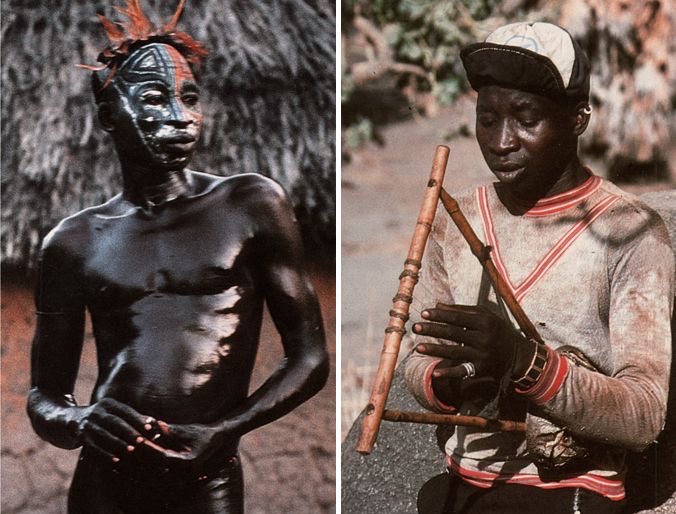
The use of bull’s, water buffalo’s or gazelle’s horns has various significances in other African cultures including that of Sudanese people and ethnic groups around the continent of Africa including Kenya, Ethiopia and parts of West Africa namely Lome, Togo. For instance, the Mursi people who are a nomadic tribe from the Lower Omo Valley Ethiopia, perform a ritual called the Donga stick fighting, where they adorn themselves in black and other pigments and before engaging in combat, the men will drink the blood of a cow before it clots, which is believed to give them strength to endure the battle. This custom makes his mouth red with blood, which resembles the portrayal of the Jab Jab, who will use red food colouring in his mouth. For most revellers, the dangling piece of saltfish in his or her mouth has also become inseparable from the Jab. Upon the conclusion of the Donga stick fighting, the champion will have an opportunity to pick a female companion of his choosing and as a symbolic gesture will offer her a cow’s horn which will be worn by her as a symbol of pride and honour. The Mursi people are most notably known for their elaborate clay lip-plate, elongated ear lobes and body scarification.
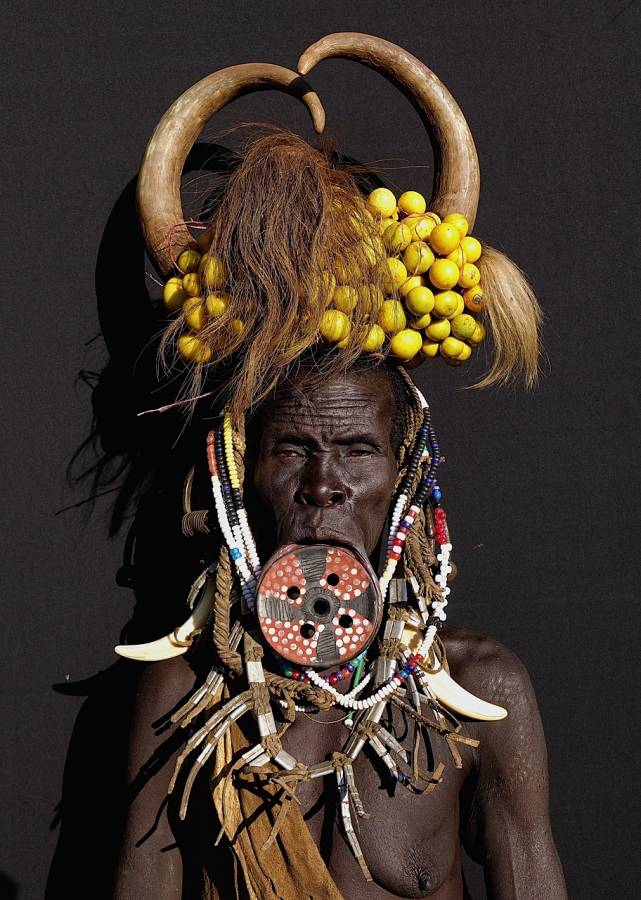
But last but not least, let’s discuss the Jab Jab obsession with death with the dragging of coffins on the streets. This can be linked to Anpu (Anubis) meticulous role in preparing the dead by removing their organs and preserving the body in ancient Kemet. Another aspect of the Jab Jab uniform is the use of snakes which also has ancient significance since the serpent represents enlightenment, higher intuition and spiritual awakening.
Other recent displays of the Jab Jab including the chains took elements from the experience during slavery and is now used during the portrayal which has taken on new meaning for Grenadians. It is no doubt that this portrayal has been passed down from our ancestors that predate slavery by thousands of years, but over time has taken on new meaning with additional practices infused into the cultural portrayals. I, therefore again, challenge our local historians to conduct more research into the origins of the Jab Jab since as the saying goes there’s nothing new under the Sun.
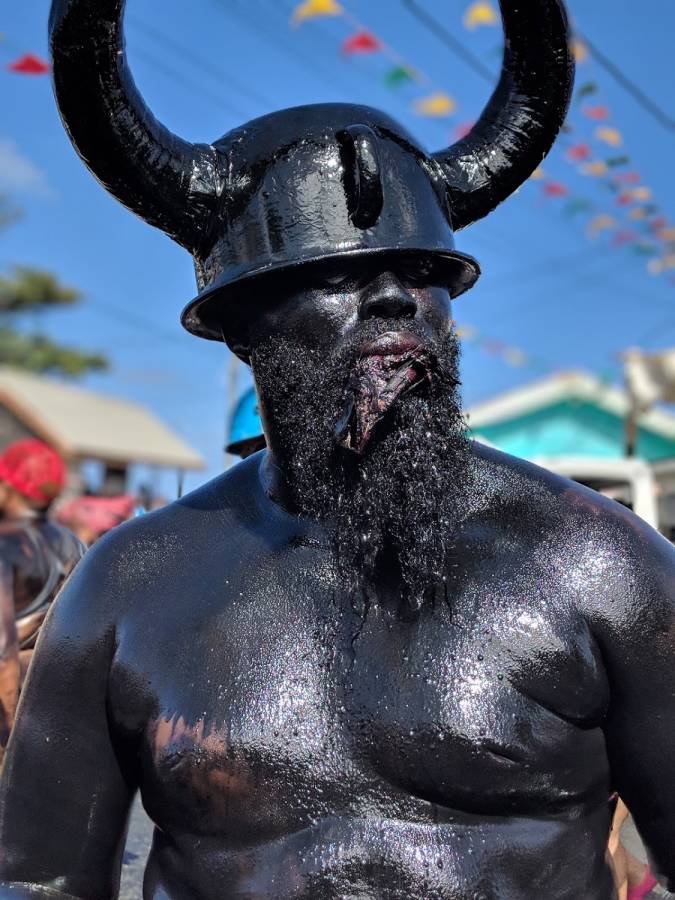



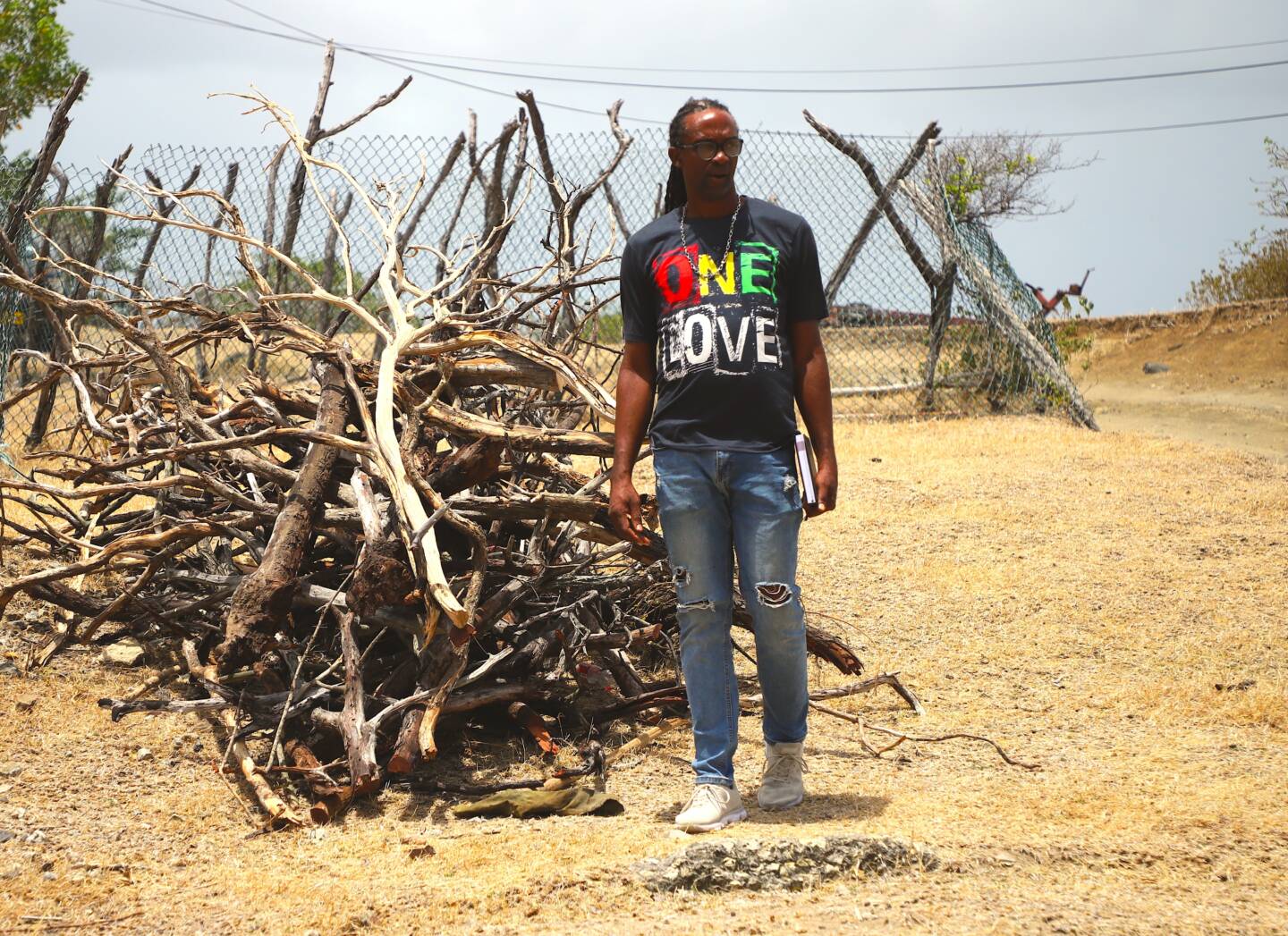













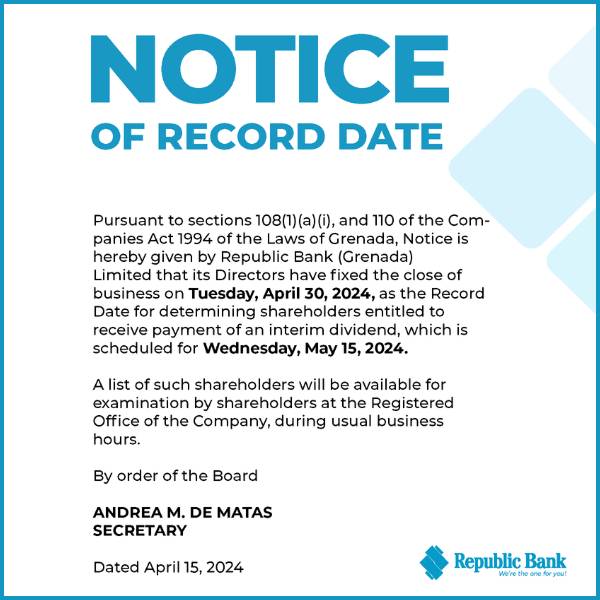


An excellent article. My compliments to Curlan. I also share is view that the origins of Jab Jab are not as immediate or as superficially linked to slave confrontation and the burning of cane. Curlan had identified the true origins of the Jab. Thank you!
And now we have the vaccines which are known as ‘Jabs’
Agree. I’ve always also suspected a connection between Jab Jab culture and the Festival of Santo Domingo in Nicaragua that features similar rituals with oil and iron
Thank you
Well done article. I luv history
Very well done… I always knew there was more about jab jab.. Some weeks ago I came across a video of a Sudanese ritual very similar to jab celebration and I was amused by the similarities.. Caribbean history is taught in school. But barely scratched the history of Grenada.. I wish ministry of education and culture made some kinda inicitive to incorporate Grenada history into our school curriculum.. It should be a mandatory subject
This article is extremely well done and researched. We often live an existence, whether we know it or not, under Eurocentric influences…even the Jab Jab has been penetrated. You have provided us with an accurate historical account of our existence today.
Well done!
Where did you do your research ?
Grateful for the some info as to where you got your info from.
Very interesting article. I look at tribal documtribal especially the mursa people the nomadic tribes and even the gods the horns,mummification etc and it adds up yes ancient Kemet had all the answers